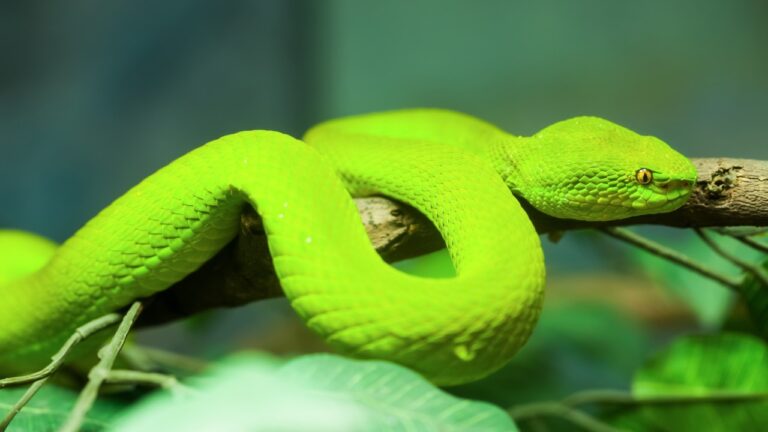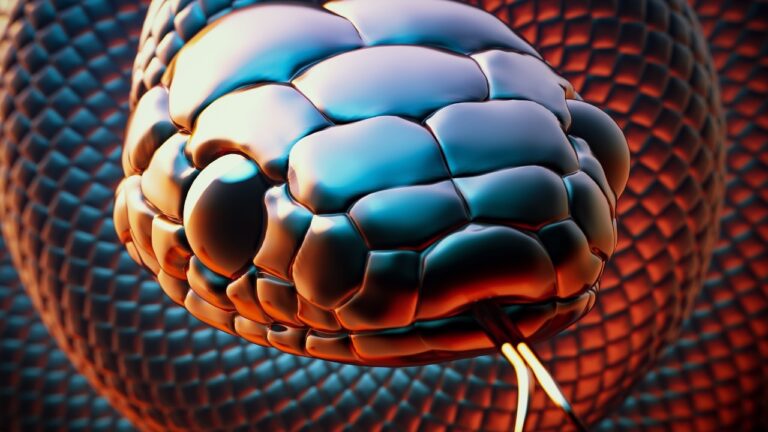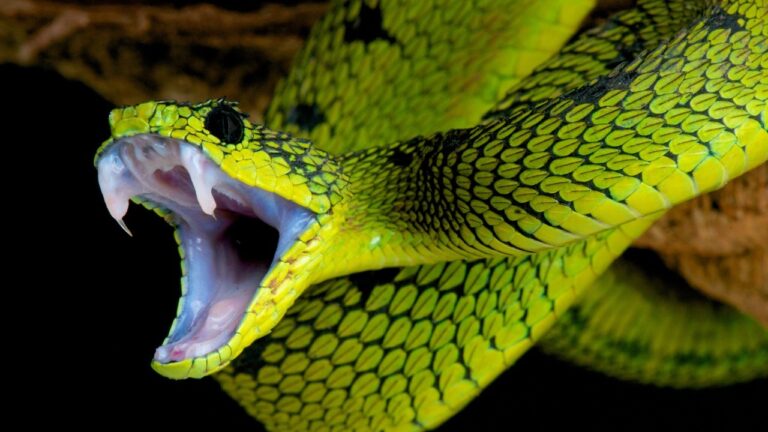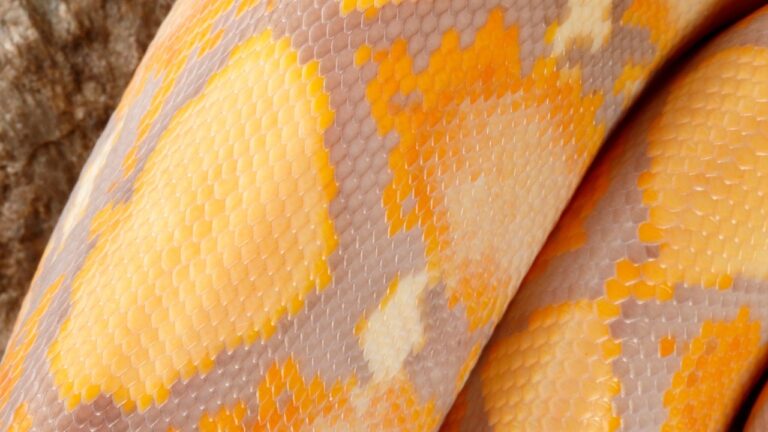Snake Inclusion Body Disease: Understanding Specialized Health Conditions
Overview of snake inclusion body disease (SIBD)
In the world of reptile health, there are certain conditions that demand our attention and understanding. One such condition is snake inclusion body disease (SIBD), a specialized ailment that affects certain snake species. SIBD is a complex and often perplexing disease, with symptoms that can vary widely from snake to snake. As a responsible snake owner or enthusiast, it is crucial to have a comprehensive understanding of this condition in order to ensure the well-being of your scaly companions.
Snake inclusion body disease, also known as SIBD, is a viral infection that primarily affects boas and pythons. It is characterized by the formation of distinctive inclusion bodies, which are abnormal structures found within the cells of infected snakes. These inclusion bodies can be observed under a microscope and serve as a diagnostic marker for the disease.
While the exact causes and transmission methods of SIBD are not fully understood, it is believed to be primarily transmitted through direct contact with infected snakes or contaminated environments. Additionally, there is evidence to suggest that SIBD can be passed down from generation to generation through breeding. This makes it crucial for snake owners and breeders to be vigilant in their efforts to prevent the spread of this disease.
Identifying SIBD can be challenging, as it manifests in a variety of ways. Common symptoms include neurological disorders such as head tilting and uncoordinated movements, as well as respiratory issues like wheezing and difficulty breathing. It is important to note that these symptoms can overlap with other snake health conditions, making an accurate diagnosis crucial for effective treatment.
In the following sections, we will delve deeper into the effects of SIBD on snake health, explore management strategies for this specialized condition, and discuss the precautions that snake owners should take to safeguard their beloved reptilian companions. By gaining a comprehensive understanding of SIBD, we can equip ourselves with the knowledge needed to provide the best possible care for these fascinating creatures.
Understanding Snake Inclusion Body Disease
Snake Inclusion Body Disease (SIBD) is a specialized health condition that affects snakes. It is important for snake owners and enthusiasts to have a thorough understanding of this disease in order to provide the best possible care for their reptilian companions. In this section, we will delve into the various aspects of SIBD, including its definition, causes and transmission, as well as the symptoms and methods of diagnosis.
What is SIBD?
Snake Inclusion Body Disease, commonly referred to as SIBD, is a viral disease that primarily affects snakes. It is characterized by the presence of inclusion bodies, which are abnormal structures that can be found in the cells of infected snakes. These inclusion bodies are often observed in the nervous system, respiratory system, and digestive system of the affected snakes.
Causes and Transmission
The exact cause of Snake Inclusion Body Disease is still not fully understood. However, it is believed to be caused by a specific type of virus known as the Arenavirus. This virus has been found in several snake species, including boas and pythons. The transmission of the virus can occur through direct contact with infected snakes, as well as through contaminated equipment or environments.
It is important to note that not all snakes exposed to the virus will develop symptoms of SIBD. Some snakes may carry the virus without showing any signs of illness, while others may experience severe symptoms. The variability in the presentation of the disease makes it crucial for snake owners to be vigilant and take appropriate preventive measures.
Symptoms and Diagnosis
Snake Inclusion Body Disease can manifest itself in a variety of symptoms, which can vary depending on the affected organ systems. Common symptoms include regurgitation, weight loss, neurological abnormalities, respiratory distress, and abnormal shedding patterns. In some cases, infected snakes may also exhibit signs of stomatitis, a condition characterized by inflammation of the mouth.
Diagnosing SIBD can be challenging, as the symptoms may overlap with those of other diseases. However, veterinary professionals can perform various tests to aid in the diagnosis. These may include blood tests, fecal examinations, radiography, and tissue biopsies. By conducting a comprehensive evaluation, veterinarians can accurately identify the presence of SIBD and provide appropriate treatment options.
Understanding the intricacies of Snake Inclusion Body Disease is crucial for snake owners to ensure the well-being of their scaly companions. In the next section, we will explore the effects of SIBD on snake health, shedding light on the impact it can have on the digestive system, neurological disorders, and respiratory issues. Stay tuned!
Internal links: snake scale rot, snake mouth rot, snake respiratory infection, snake shedding problems
Effects on Snake Health
Snake inclusion body disease (SIBD) can have significant effects on the overall health and well-being of snakes. This specialized health condition can manifest in various ways, affecting different systems within the snake’s body. Understanding these effects is crucial for snake owners and enthusiasts to provide the necessary care and support for their reptilian companions.
Impact on Digestive System
One of the primary areas where SIBD can wreak havoc is the digestive system of snakes. Affected snakes may experience a range of gastrointestinal issues, including loss of appetite and regurgitation. These symptoms can lead to malnutrition and weight loss, compromising the snake’s overall health. Additionally, snakes with SIBD may develop intestinal inflammation and ulcers, which can further exacerbate their digestive difficulties.
It’s important to note that the impact of SIBD on the digestive system can vary among different snake species. Some snakes may exhibit more severe symptoms, while others may display more subtle signs of digestive distress. Regular health checks and close observation are essential for early detection and intervention.
Neurological Disorders
SIBD can also manifest as neurological disorders in snakes. This can include a wide range of symptoms such as ataxia (loss of coordination), tremors, and seizures. These neurological manifestations can be distressing for both the snake and its owner, as they can significantly impair the snake’s ability to move and function normally.
Neurological disorders associated with SIBD are caused by the accumulation of viral particles in the nervous system. These particles can disrupt the normal functioning of the neurons, leading to the observed symptoms. Unfortunately, there is currently no known cure for these neurological effects of SIBD. However, supportive care and measures to enhance the snake’s overall comfort and quality of life can be implemented.
Respiratory Issues
Respiratory problems are another common consequence of SIBD in snakes. Snakes with SIBD may develop respiratory infections such as pneumonia or bronchitis. These infections can lead to symptoms such as wheezing, nasal discharge, and labored breathing. If left untreated, these respiratory issues can worsen, potentially leading to severe complications and even death.
It’s crucial for snake owners to be vigilant in monitoring their snakes’ respiratory health and seek veterinary care at the first sign of any respiratory distress. Prompt treatment with appropriate medications, such as antibiotics, can help manage the respiratory symptoms and prevent further complications.
Understanding the effects of SIBD on snake health is vital for providing the best possible care for these remarkable reptiles. By being aware of the impact on the digestive system, neurological disorders, and respiratory issues, snake owners can take proactive steps to ensure their snakes’ well-being. Regular health checks, responsible husbandry practices, and prompt veterinary care are essential components of managing SIBD and mitigating its effects on snake health.
To learn more about other health conditions that may affect snakes, such as snake scale rot or snake mouth rot, visit serpentsuppers.com.
Managing Snake Inclusion Body Disease
As a snake owner, it is crucial to understand how to effectively manage Snake Inclusion Body Disease (SIBD) in order to provide the best care for your beloved reptile. This section will outline the necessary steps to take when dealing with this specialized health condition.
Quarantine Procedures
When a snake is diagnosed with SIBD, one of the first steps to take is implementing proper quarantine procedures. This involves isolating the affected snake from other healthy snakes to prevent the spread of the disease. Quarantine not only protects the healthy snakes from potential infection but also allows for careful monitoring and observation of the affected snake’s condition.
During the quarantine period, it is essential to provide a clean and stress-free environment for the snake. Ensure that the quarantine enclosure is spacious enough for the snake to move comfortably. Regular cleaning and disinfection of the enclosure, along with proper waste management, are crucial to prevent the buildup of harmful bacteria or viruses.
Veterinary Care and Treatment
Seeking veterinary care for a snake with SIBD is of utmost importance. A reptile veterinarian with experience in snake health should be consulted to provide the necessary diagnosis and treatment plan. These specialized professionals have the knowledge and expertise to accurately diagnose SIBD and recommend appropriate treatment options.
The treatment for SIBD may vary depending on the severity of the disease and the overall health of the snake. Supportive care, such as fluid therapy and nutritional supplementation, is often provided to maintain the snake’s well-being. Additionally, medications may be prescribed to manage specific symptoms or complications associated with SIBD.
Regular follow-up visits with the veterinarian are essential to monitor the progress of the snake’s condition and make any necessary adjustments to the treatment plan. Open communication with the veterinarian is crucial to address any concerns or questions that may arise during the management of SIBD.
Preventive Measures
While there is currently no known cure for SIBD, there are preventive measures that snake owners can implement to minimize the risk of their snakes contracting the disease. These measures not only help prevent the spread of SIBD but also contribute to the overall health and well-being of snakes in general.
Proper hygiene practices, such as regular cleaning and disinfection of enclosures, can help prevent the transmission of SIBD and other infectious diseases among snakes. Maintaining a clean and healthy environment is key to reducing the risk of disease outbreaks.
Furthermore, it is essential to practice responsible acquisition of snakes. Thoroughly research and choose reputable breeders or sellers who prioritize the health and welfare of their snakes. This can help minimize the risk of introducing snakes with pre-existing health conditions, including SIBD, into your collection.
Regular health checks are also crucial in the prevention and early detection of SIBD. Observing any changes in your snake’s behavior, appetite, or physical appearance and promptly seeking veterinary attention can make a significant difference in managing the disease.
By implementing these preventive measures and prioritizing the health and welfare of your snakes, you can minimize the risk of SIBD and other health issues, ensuring a safe and thriving snake collection.
To learn more about other specialized health conditions that can affect snakes, check out our articles on snake respiratory infection and snake neurological disorders.
Precautions for Snake Owners
As a responsible snake owner, it is essential to take certain precautions to ensure the well-being and health of your scaly companion. By following proper husbandry practices, scheduling regular health checks, and engaging in responsible breeding, you can minimize the risk of your snake developing complications associated with snake inclusion body disease (SIBD) and other specialized health conditions.
Proper Husbandry Practices
Maintaining a suitable environment for your snake is crucial for its overall health and vitality. Proper husbandry practices include providing the appropriate temperature and humidity levels, ensuring a clean and spacious enclosure, and offering a well-balanced diet. It is essential to research the specific requirements of your snake species and create an environment that mimics its natural habitat as closely as possible. This will help reduce stress and prevent the onset of various health issues.
Regularly cleaning the enclosure and removing waste is vital to prevent the accumulation of bacteria and parasites that could lead to infections. Additionally, providing appropriate hiding spots and environmental enrichment, such as branches or rocks, will contribute to your snake’s mental and physical well-being.
Regular Health Checks
Regular veterinary check-ups are essential for the early detection of any health issues your snake may be experiencing. Regular health checks allow veterinarians to assess your snake’s overall condition, identify any potential problems, and provide necessary treatments or preventive measures.
During these check-ups, veterinarians may perform physical examinations, which can include checking for signs of infection, snake scale rot, snake mouth rot, or snake mites infestation. They may also conduct tests to evaluate the snake’s organ function and screen for common conditions like snake respiratory infections, snake septicemia, or snake kidney disease. These routine visits not only help maintain your snake’s health but also provide an opportunity for you to ask questions and seek advice on proper care.
Responsible Breeding
Breeding snakes should only be undertaken with careful consideration and responsibility. Responsible breeding involves understanding the genetic history and health of the parent snakes, ensuring they are free from any known genetic or infectious diseases, and selecting suitable mates to minimize the risk of passing on health issues to the offspring.
By practicing responsible breeding, snake owners can help prevent the spread of specialized health conditions, such as SIBD, and promote the overall well-being of the snake population. It is crucial to educate yourself about the breeding process, seek guidance from experienced breeders or veterinarians, and only engage in breeding when you have the necessary knowledge and resources to provide appropriate care for the offspring.
In conclusion, taking precautions as a snake owner is essential for the health and longevity of your scaly companion. By following proper husbandry practices, scheduling regular health checks, and engaging in responsible breeding, you can help safeguard your snake against specialized health conditions like SIBD and promote their well-being. Remember, being a responsible snake owner is not only beneficial for your snake but also contributes to the overall welfare of the snake community.
Conclusion
In conclusion, snake inclusion body disease (SIBD) is a specialized health condition that snake owners need to be aware of. Understanding the causes, symptoms, and effects of SIBD is crucial for the well-being of these reptiles.
SIBD can have a significant impact on a snake’s health, particularly affecting its digestive system, neurological functions, and respiratory system. The disease may lead to issues such as regurgitation, loss of appetite, abnormal behavior, seizures, and difficulty breathing.
Managing SIBD requires strict quarantine procedures to prevent the spread of the disease to other snakes. It is also essential to seek veterinary care and treatment from professionals experienced in reptile health. Preventive measures, such as maintaining proper hygiene, ensuring a clean environment, and implementing appropriate temperature and humidity levels, can help minimize the risk of SIBD.
Snake owners should take precautions to prevent the occurrence and spread of SIBD. This includes practicing proper husbandry practices, such as providing suitable enclosures, diet, and regular cleaning. Regular health checks by a qualified veterinarian can help detect early signs of SIBD or other health issues, allowing for prompt treatment. Responsible breeding practices can also contribute to reducing the prevalence of SIBD in snake populations.
By being proactive in understanding and addressing SIBD, snake owners can ensure the well-being and longevity of their beloved pets. Remember, a healthy snake is a happy snake.
If you’re interested in learning more about other common snake health conditions, feel free to check out our articles on snake scale rot, snake mouth rot, snake mites treatment, snake respiratory infection, snake septicemia, snake prolapse treatment, snake shedding problems, snake kidney disease, snake neurological disorders, and snake infectious stomatitis. Stay informed, stay vigilant, and keep your slithery friends healthy.







